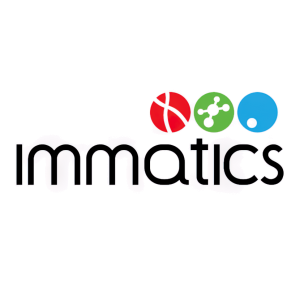Immatics IMA203 PRAME Cell Therapy Data Presented at 2025 ASCO Annual Meeting Continues to Show Strong Anti-tumor Activity and Durability in Patients with Metastatic Melanoma
Rhea-AI Summary
Positive
- Strong efficacy with 56% confirmed objective response rate across all melanoma types
- Impressive durability with responses lasting up to >2.5 years
- High response rate of 67% in uveal melanoma subgroup
- Favorable safety profile with manageable side effects
- Deep responses in 42% of patients with median PFS of 12.9 months
- High PRAME prevalence (90-95%) in melanoma indicating large market potential
- FDA RMAT designation received, supporting accelerated development
Negative
- Median progression-free survival of 6.1 months indicates disease progression for many patients
- 39% overall survival rate drop at 12 months (61% survival rate)
- Multiple rounds of prior treatment failure in patient population may limit market positioning
Insights
IMA203 shows impressive 56% response rate with durable benefits in difficult-to-treat melanoma patients; Phase 3 SUPRAME trial could lead to 2027 approval.
Immatics' data presentation at ASCO 2025 for their IMA203 PRAME-targeted cell therapy represents a potentially significant advancement in metastatic melanoma treatment, particularly for patients who have progressed after standard therapies. The extended Phase 1b follow-up data in 33 heavily pretreated patients demonstrates several noteworthy outcomes:
The 56% confirmed objective response rate across all melanoma subtypes is clinically meaningful, especially considering these patients had received a median of 2 prior systemic treatments. For context, response rates to subsequent therapies after checkpoint inhibitor failure in melanoma typically range from 4-30%, making this data particularly encouraging.
The durability metrics are equally compelling – median duration of response of 12.1 months, with some patients maintaining responses beyond 2.5 years. The median progression-free survival of 6.1 months and median overall survival of 15.9 months represent substantial improvements over the expected 2-3 month PFS in this post-checkpoint inhibitor population.
Most striking is the activity in uveal melanoma, a notoriously treatment-resistant subtype with historically poor outcomes. The 67% response rate observed here exceeds expectations for this difficult disease, where effective treatments are especially limited.
The safety profile appears manageable, with cytokine release syndrome occurring as expected with cell therapies but mostly at grades 1-2, and limited neurotoxicity. This tolerability profile supports the therapy's potential for broader clinical use.
The initiated Phase 3 SUPRAME trial is appropriately designed with progression-free survival as the primary endpoint and includes overall survival as a key secondary measure. The 1:1 randomization against investigator's choice therapy will provide clear evidence of comparative efficacy. With completion expected in 2026 and BLA submission targeted for Q1 2027, Immatics has established a clear regulatory pathway.
What's particularly notable is that PRAME (PReferentially expressed Antigen in MElanoma) is expressed in over 50 different cancers, suggesting potential applications far beyond melanoma if the efficacy profile holds in other indications. This positions IMA203 as potentially the first approved therapy in what could become a broad PRAME-targeted treatment franchise.
- Extended Phase 1b trial follow-up on IMA203 PRAME cell therapy in 33 heavily pretreated patients with metastatic melanoma demonstrates favorable tolerability and promising clinical activity with ongoing deep and durable objective responses up to >2.5 years
- IMA203 PRAME cell therapy one-time infusion in all melanoma patients shows cORR of
56% ; mDOR of 12.1 months at mFU of 13.4 months; mPFS of 6.1 months; mOS of 15.9 months
- Cutaneous melanoma subgroup post-checkpoint inhibitor shows cORR of
50% , mDOR not reached at mFU of 16.7 months; mPFS of 6.0 months - Uveal melanoma subgroup, including tebentafusp-refractory patients shows cORR of
67% , mDOR of 11.0 months at mFU of 13.4 months; mPFS of 8.5 months
- Cutaneous melanoma subgroup post-checkpoint inhibitor shows cORR of
- Positive Phase 1b data and high PRAME prevalence in melanoma reinforce the basis for the ongoing SUPRAME Phase 3 trial in previously treated advanced or metastatic cutaneous melanoma, as well as the continued Phase 1b expansion in uveal melanoma
- ASCO presentations further substantiate Immatics’ global leadership in precision targeting of PRAME and potential of IMA203 to be the Company’s first PRAME product
Stafford, Texas and Tuebingen, Germany, May 31, 2025 – Immatics N.V. (NASDAQ: IMTX, “Immatics” or the “Company”), a clinical-stage biopharmaceutical company active in the discovery and development of T cell-redirecting cancer immunotherapies, today announced the presentation of expanded data from the ongoing Phase 1b clinical trial evaluating IMA203 PRAME cell therapy in heavily pretreated patients with metastatic melanoma. The longer follow-up of patients demonstrates a consistent and favorable tolerability profile as well as durable responses with a confirmed ORR of
The data from the ongoing Phase 1b trial will be presented on Saturday, May 31, 2025, during an oral presentation by Martin Wermke, M.D. The Trial in Progress poster (TiP) will be presented at the conference on Monday, June 2, 2025, by Jason Luke, M.D., FACP, FASCO. The IMA203 slides, including the ASCO data and additional data, are accessible in the ‘Events & Presentations’ section of the Investor & Media section of the Company’s website.
“Patients with advanced melanoma post-failure of checkpoint inhibition are left to face frequent and often rapid disease progression and limited long-term survival. These individuals are in urgent need of new treatments that deliver deeper and more durable responses,” said Cedrik Britten, M.D., Chief Medical Officer at Immatics. “We believe the data presented today emphasize the strength, durability and tangible therapeutic potential of our one-time infusion PRAME cell therapy, IMA203, in this patient population. These positive results reinforce our commitment to actively advance IMA203 through the ongoing Phase 3 SUPRAME trial to bring this PRAME therapy to the market as soon as possible.”
“PRAME is a highly prevalent target that is expressed in more than 50 cancers. This, combined with the data presented at ASCO, further strengthens our position as the global leader in precision targeting of PRAME. We view our progress in melanoma as a critical step in our journey to building the broadest PRAME franchise with the most indications and modalities and delivering novel PRAME immunotherapies to cancer patients with high unmet medical needs,” said Harpreet Singh, Ph.D., Chief Executive Officer and Co-Founder at Immatics.
Oral Presentation Summary - IMA203 Phase 1b Trial
Patient Population: Heavily pretreated patients with metastatic melanoma
As of April 7, 2025, 33 heavily pretreated patients with metastatic melanoma were administered a one-time infusion of IMA203 at the recommended Phase 2 dose (RP2D, 1 to 10 billion total TCR T cells) in the Phase 1b dose expansion. The treated patient population consisted of cutaneous melanoma (n=14), uveal melanoma (n=16), mucosal melanoma (n=2) and melanoma of unknown primary (n=1). Patients had a median of 2 lines of prior systemic treatments. The subgroup of patients with cutaneous melanoma had a median of 2.5 lines of prior systemic treatments, thereof a median of 2 lines of prior immune checkpoint inhibitors.
Safety: Favorable tolerability
The safety population included 74 patients combined from the Phase 1a dose escalation and Phase 1b dose expansion across all dose levels and all tumor types. IMA203 has maintained a favorable tolerability profile.
The most frequent treatment-emergent adverse events were anticipated cytopenias associated with lymphodepletion. Expected and manageable cytokine release syndrome (CRS) was mostly Grades 1 and 2, which is consistent with the mechanism of action (Grade 1:
Tolerability in the Phase 1b melanoma subset was generally consistent with the full IMA203 tolerability profile.
Anti-tumor activity and durability: Encouraging anti-tumor activity of IMA203 PRAME cell therapy, including durable responses up to >2.5 years with longer follow-up
| | All melanoma1,2 (n=33) | Cutaneous melanoma (n=14) | Uveal melanoma2 (n=16) |
| | | | |
| cORR | | | |
| ORR | | | |
| DCR | | | |
| mDOR (range) / mFU [mo] | 12.1 (1.8+, 32.6+) / 13.4 | NR3 (4.2, 32.6+) / 16.7 | 11.0 (1.8+, 31.6) / 13.4 |
| mPFS (range) / mFU [mo] | 6.1 (1.4, 34.0+) / 14.4 | 6.0 (1.4, 34.0+) / 14.4 | 8.5 (1.4, 32.9) / 8.7 |
| mOS (range) / mFU [mo] | 15.9 (2.4, 34.2+) / 14.4 | 13.9 (2.4, 34.0+) / 14.4 | 16.2 (3.2+, 34.2+) / 14.5 |
The PFS rate was
Translational analyses demonstrated that treatment with IMA203 resulted in the shrinkage of metastatic target lesions throughout the body. This included reductions in difficult-to-treat metastases, such as liver, lung, lymph node, abdomen/peritoneum, skin and others. Some individual lesions had a complete resolution (-
The positive Phase 1b data and high PRAME prevalence (~90
Trial-in-Progress Poster Summary – IMA203 SUPRAME Phase 3 Trial
Based on the positive clinical data and supported by the FDA RMAT designation4, Immatics advanced its PRAME cell therapy, IMA203, into the randomized-controlled Phase 3 SUPRAME trial (NCT06743126).
SUPRAME is a prospective, multicenter, open-label, randomized, actively controlled Phase 3 clinical trial evaluating the efficacy, safety and tolerability of IMA203 vs. investigator's choice in ~360 patients with unresectable or metastatic cutaneous melanoma who have received prior treatment with a checkpoint inhibitor. Patient eligibility is determined by protocol inclusion/exclusion criteria, including HLA screening. If patients are HLA-A*02:01 positive and meet the eligibility criteria, they will undergo leukapheresis and be randomized 1:1. Patients in the IMA203 arm will undergo lymphodepletion with cyclophosphamide (500 mg/m2 x 4 days) and fludarabine (30 mg/m2 x 4 days), subsequent infusion of 1-10 x109 IMA203 PRAME-directed TCR T cells, followed by low-dose IL-25 (subcutaneous). Patients in the control arm will receive either nivolumab/relatlimab, nivolumab, ipilimumab, pembrolizumab, lifileucel (in the US), or chemotherapy based on investigator’s choice. The primary endpoint is blinded independent central review (“BICR”)-assessed (RECIST 1.1) PFS. Secondary endpoints include OS, ORR, safety and patient-reported outcomes about quality of life.
The expected median PFS in this post-checkpoint inhibitor patient population6 is 2-3 months, and the IMA203 Phase 1b data presented today at ASCO indicate a continued median PFS of ≥6 months.
SUPRAME is planned to be conducted in more than 50 sites in North America and Europe.
Patient enrollment and randomization for the trial was initiated in early 2025 and is expected to be completed in 2026. A pre-specified interim data analysis will be triggered upon the occurrence of a defined number of events for PFS (progressive disease or death)7, anticipated to occur after approximately 200 patients. Immatics aims to submit a Biologics License Application (BLA) to the FDA in 1Q 2027 for full approval.
About PRAME
PRAME is a target expressed in more than 50 cancers. Immatics is the global leader in precision targeting of PRAME and has the broadest PRAME franchise with the most PRAME indications and modalities. The Immatics PRAME franchise currently includes three product candidates, two therapeutic modalities and a combination therapy that target PRAME: IMA203 PRAME cell therapy, IMA203CD8 PRAME cell therapy (GEN2), IMA402 PRAME bispecific, IMA203 in combination with Moderna’s PRAME adaptive immune modulating therapy.
About IMA203 PRAME Cell Therapy
IMA203 is a PRAME-directed TCR T-cell therapy engineered to recognize an intracellular PRAME-derived peptide presented by HLA-A*02:01 on the cell surface and initiate a potent and specific anti-tumor response. IMA203 PRAME cell therapy is currently being evaluated in a registration-enabling randomized controlled Phase 3 trial, “SUPRAME,” in patients with unresectable or metastatic cutaneous melanoma who have disease progression on or after treatment with at least one checkpoint inhibitor. In parallel, the Phase 1b clinical trial in patients with PRAME cancers is ongoing with a focus on uveal melanoma.
About Immatics
Immatics combines the discovery of true targets for cancer immunotherapies with the development of the right T cell receptors with the goal of enabling a robust and specific T cell response against these targets. This deep know-how is the foundation for our pipeline of Adoptive Cell Therapies and TCR Bispecifics as well as our partnerships with global leaders in the pharmaceutical industry. We are committed to delivering the power of T cells and to unlocking new avenues for patients in their fight against cancer.
Immatics intends to use its website www.immatics.com as a means of disclosing material non-public information. For regular updates you can also follow us on LinkedIn and Instagram.
Forward-Looking Statements
Certain statements in this press release may be considered forward-looking statements. Forward-looking statements generally relate to future events or the Company’s future financial or operating performance. For example, statements concerning timing of data read-outs for product candidates, the timing, outcome and design of clinical trials, the nature of clinical trials (including whether such clinical trials will be registration-enabling), the timing of IND, CTA or BLA filings, estimated market opportunities of product candidates, the Company’s focus on partnerships to advance its strategy, and other metrics are forward-looking statements. In some cases, you can identify forward-looking statements by terminology such as “may”, “should”, “expect”, “plan”, “target”, “intend”, “will”, “estimate”, “anticipate”, “believe”, “predict”, “potential” or “continue”, or the negatives of these terms or variations of them or similar terminology. Such forward-looking statements are subject to risks, uncertainties, and other factors which could cause actual results to differ materially from those expressed or implied by such forward-looking statements. These forward-looking statements are based upon estimates and assumptions that, while considered reasonable by Immatics and its management, are inherently uncertain. New risks and uncertainties may emerge from time to time, and it is not possible to predict all risks and uncertainties. Factors that may cause actual results to differ materially from current expectations include, but are not limited to, various factors beyond management's control including general economic conditions and other risks, uncertainties and factors set forth in the Company’s Annual Report on Form 20-F and other filings with the Securities and Exchange Commission (SEC). Nothing in this press release should be regarded as a representation by any person that the forward-looking statements set forth herein will be achieved or that any of the contemplated results of such forward-looking statements will be achieved. You should not place undue reliance on forward-looking statements, which speak only as of the date they are made. The Company undertakes no duty to update these forward-looking statements. All the scientific and clinical data presented within this press release are – by definition prior to completion of the clinical trial and a clinical study report – preliminary in nature and subject to further quality checks including customary source data verification.
For more information, please contact:
Media
Real Chemistry
Matt Wright
mwright@realchemistry.com
Immatics N.V.
Jordan Silverstein
Head of Strategy
Phone: +1 346 319-3325
InvestorRelations@immatics.com
- END -
1 Melanoma efficacy population includes n=3 patients with other melanoma subtypes (n=2 mucosal melanoma, n=1 melanoma of unknown primary; data can be found in the IMA203 slides).
2 cORR excludes 1 uveal melanoma patient with ongoing unconfirmed PR.
3 NR, not reached
PD: progressive disease; BL: baseline; PR: partial response; (c)ORR: (confirmed) objective response rate; DCR: disease control rate at week 6; mDOR: median duration of response; mFU: median follow-up; mPFS: median progression-free survival; mOS: median overall survival
4Includes all benefits of Breakthrough Therapy Designation.
5 1m IU daily days 1-5 and twice daily days 6-10, total dose is approx. only
6 Ascierto et al., 2023, Diab et al., 2024.
7 Centrally assessed by BICR using RECIST v1.1.
Attachment








